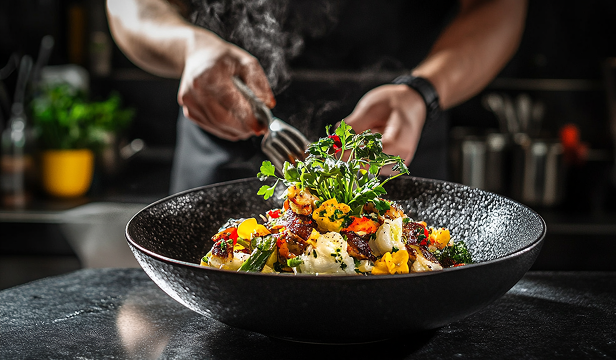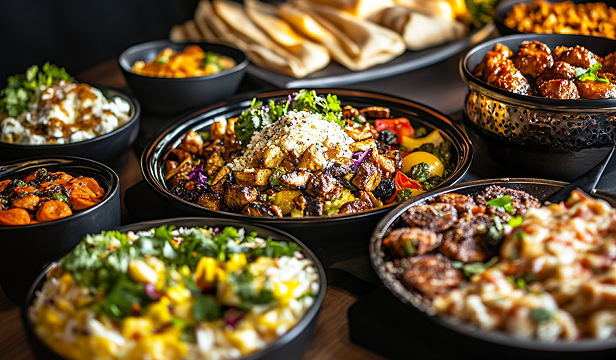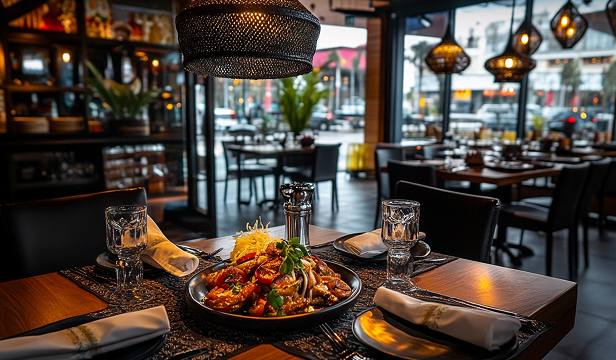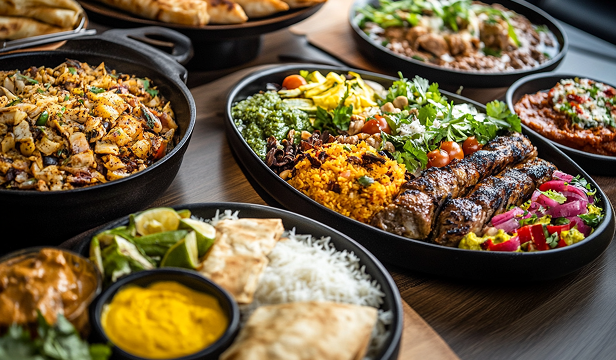Introduction Middle Eastern art is renowned for its intricate patterns, rich colours, and deep cultural…

The Art of Plating: How Chefs and Artists Share Creativity
Introduction
Plating is more than just arranging food on a dish; it is an art form that mirrors the creativity and craftsmanship found in traditional visual arts. Just as painters, sculptors, and designers use colour, texture, and composition to create masterpieces, chefs apply similar principles to elevate dining into a multi-sensory experience. The convergence of these two disciplines—culinary arts and visual arts—has transformed the modern dining landscape, making food presentation as important as taste.
The Intersection of Culinary and Visual Arts
At the heart of both culinary and visual arts lies the principle of aesthetics. Artists and chefs alike manipulate elements such as balance, contrast, and harmony to evoke emotions and engage their audience. This crossover is evident in several ways:
- Use of Colour: Just as artists use a palette to blend and contrast colours, chefs carefully select ingredients to create visually appealing plates. Vibrant sauces, edible flowers, and colourful garnishes mirror the bold strokes of a painter’s brush.
- Texture and Layering: Sculptors and mixed-media artists incorporate layers and depth into their works, much like chefs do when plating dishes with multiple textures—crisp, creamy, smooth, and crunchy—to enhance visual and sensory appeal.
- Composition and Symmetry: Whether it’s the rule of thirds in photography or symmetry in fine art, plating follows similar design principles to create a visually striking dish.
Techniques That Marry Art and Cuisine
Some of the most celebrated chefs take inspiration from fine art movements, applying artistic techniques to their culinary creations. These include:
- Minimalism: Inspired by minimalist artists, chefs often employ negative space on the plate, allowing the food itself to become the focal point.
- Abstract Expressionism: Bold, spontaneous plating styles with unexpected splashes of colour and irregular patterns evoke the dynamic energy of abstract paintings.
- Baroque and Ornate Detailing: Some culinary artists embrace elaborate designs reminiscent of baroque art, using intricate details and opulent garnishes to create a luxurious effect.
Collaboration Between Chefs and Artists
The synergy between chefs and visual artists has led to exciting collaborations across the world. Examples include:
- Restaurants Commissioning Artists: Many fine-dining establishments work with painters, sculptors, and ceramicists to create custom tableware that complements their dishes.
- Chefs as Artists: Some chefs train in traditional art disciplines, using their knowledge of painting, sculpting, and design to influence their plating techniques.
- Edible Installations: Food-focused art exhibitions blur the line between culinary and fine arts, offering immersive experiences that engage all five senses.
Cultural Influences on Plating
Much like art, plating styles are influenced by cultural traditions and history. Japanese kaiseki dining, for instance, focuses on seasonal aesthetics and harmony, whereas French haute cuisine emphasises refined elegance and intricate detail. Middle Eastern and Indian cuisine, with their rich colours and ornate patterns, reflect the artistic heritage of their respective regions.
The Future of Artistic Plating
As the boundaries between art and food continue to blur, the future of plating promises even greater creativity. Advancements in food technology, molecular gastronomy, and AI-driven design are enabling chefs to push artistic limits like never before. Whether through interactive dining experiences, 3D-printed food art, or conceptual plating styles, the evolution of food presentation is poised to redefine how we experience both art and cuisine.
Conclusion
The art of plating is a testament to the shared creativity of chefs and artists, merging culinary expertise with artistic vision. As both fields continue to inspire each other, the dining experience becomes more than just a meal—it transforms into a captivating visual and sensory journey. Whether through bold experimentation or meticulous refinement, the interplay between art and cuisine highlights the universal language of creativity.



